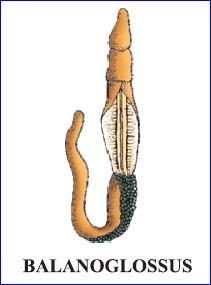 This is Online Notes on Chapter=7 (Control and Coordination) Part 1 for preparation of CBSE BOARD Examination, NTSE etc.
This is Online Notes on Chapter=7 (Control and Coordination) Part 1 for preparation of CBSE BOARD Examination, NTSE etc.• All the living organisms respond and react to changes in the environment around them.
• The changes in the environment to which the organisms respond and react are called Stimuli such as light, heat, cold, sound, smell, touch etc.
• Both plants and animals respond to stimuli but in a different manner. Control and Coordination in Animals
It is brought about in all animals with the help of two main systems:
(a) Nervous system
(b) Endocrine system
NERVOUS SYSTEM:
• Control and coordination are provided by nervous and muscular tissues.
• Nervous tissue is made up of an organized network of nerve cells or neurons, and is specialized for conducting information via electrical impulses from one part of the body to another.
Receptors : Are specialized tips of some nerve cells that detect the information from the environment. These receptors are located in our sense organs.
(a) Ear :
• Phonoreceptors
• Hearing
• Balance of the body
(b) Eyes :
• Photoreceptors
• Seeing
(c) Skin :
• Thermoreceptors
• Heat or cold
• Touch
(d) Nose :
• Olfactory receptors
• Smell detection
(e) Tongue :
• Gustatory receptors
• Taste detection
Neuron : It is the structural and functional unit of nervous system.
Parts of Neuron :
(a) Dendrite : Acquires information.
(b) Cell body : Acquired information travels as an electrical impulse.
(c) Axon : Longest fibre on the cell body is called axon. It transmits electrical impulse from cell body to dendrite of next neuron.
Synapse : It is the gap between the nerve ending of one neuron and dendrite of the other neuron. Here electrical signal is converted into chemical signal for onward transmission.
REFLEX ACTION:
Reflex action is quick, sudden and immediate response of
Reflex arc : The pathway through which nerve impulses pass during reflex action is called Reflex Arc.
Response : Responses are of three main types :
(a) Voluntary : Controlled by fore brain. E.g., talking, writing.
(b) Involuntary : Controlled by mid and hind brain. E.g., heart beat, vomiting, respiration.
(c) Reflex action : Controlled by spinal cord. E.g., withdrawal of hand on touching a hot object.
Need of Reflex Actions : In some situations such as touching a hot object, pinching etc.
we need to act quickly, otherwise our body would be harmed. Here response is generated from spinal cord instead of brain.
HUMAN BRAIN:
Brain is the main coordinating centre of the body. It has three major parts :
(a) Fore-brain (b) Mid-brain (c) Hind-brain
(a) Fore-brain : It is the most complex or specialized part of the brain. It consists of cerebrum.
Functions :
(i) Thinking part of the brain.
(ii) Control the voluntary actions.
(iii)Store information (Memory).
(iv) Receives sensory impulses from various parts of the body and integrate it.
(v) Centre associated with hunger.
(b) Mid-brain : Controls involuntary actions such as :
• Change in pupil size.
• Reflex movements of head, neck and trunk.
(c) Hind-brain : It has three parts :
(i) Cerebellum : Controls posture and balance. Precision of voluntary actions e.g., picking pen.
(ii) Medulla : Controls involuntary actions e.g., blood pressure, salivation, vomiting.
(iii) Pons : Involuntary actions, regulation of respiration.
Protection of Brain and Spinal Cord:
(a) Brain : Brain is protected by a fluid filled balloon which acts as shock absorber and is enclosed in cranium (skull or brain box).
(b) Spinal Cord : Spinal cord is enclosed in vertebral column.
Coordination between Nervous and Muscular Tissue:
Limitations of Electric communication/Nervous system :
(a) Electric impulse will reach only to those cells that are connected by nervous tissue.
(b) After generation and transmission of an electrical impulse, the cell takes some time to reset its mechanism before transmitting another impulse. So cells cannot continually create and transmit impulse.
(c) Plants do not have any nervous system.
Chemical communication: To overcome the limitations of electric communication.










































